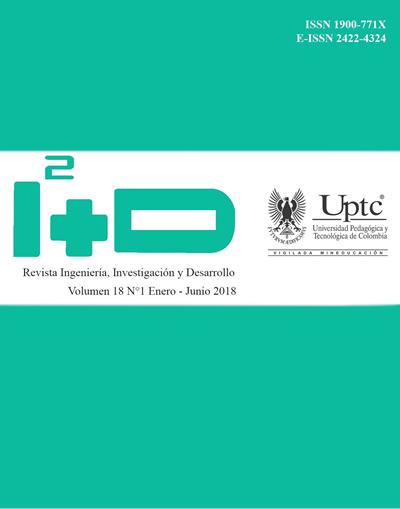Influence of the Quasi-Biennial Oscillation phenomenon in the affluences of the Bogotá supply system

Abstract
Colombia is one of the countries whose hydrological regime is highly influenced by different macro-climatic phenomena. It has been shown that the ENSO phenomenon in some regions of the country affects surface runoff by 30%, which has a direct impact on socio-economic activities. There are other phenomena whose incidence on hydrological variability has not been studied in depth. One of these is the event of the Quasi Biennial Oscillation (QBO). The study analyzed the influence of this phenomenon on the influx of the south Bogota system that supplies drinking water to 250,000 people living in the town of Usme. Using a series of monthly average results of stations located upstream of the reservoirs studied and of the historical OCB index at 50 hPa, a methodology based on correlative analysis between the monthly inflows to the reservoirs and the macro-climatic index that characterizes the OCB phenomenon. It was shown that this phenomenon manifests itself with a delay of 11 to 12 months and that the water regime in 10 to 14% depends on the phenomenon of OCB. This demonstrates that hydrological variability depends not only on the ENSO phenomenon but also on the OCB, but to a lesser degree, and must be taken into account in studies of hydrological variability and its incidence on the development of productive activities dependent of water.
Keywords
affluences, reservoirs, quasi-biennial oscillation phenomenon, variability water resource
References
- German, P. (2004). La hidroclimatologia de Colombia: una sintesis desde la escala inter-decadal hasta la escala diurna. Acad. Colom.Cienc., 210-222.
- Cortés, M. (2012). Análisis de variables de caudal y precipitación de sectores en los departamentos de Boyacá y Casanare y su alteración por fenómenosmacroclimáticos y de cambio global. L’esprit ing, Vol. 3.
- Amador, J. A. (1996). La Oscilación Cuasi-Bienal, ENOS y acoplamiento de algunos parámetros superficiales y estratosféricos sobre Costa Rica. Topografía y Meteorología Oceanográfica 3 , 45 - 53.
- Hansen, F., & Matthes, K. &. (2016). Tropospheric QBO–ENSO Interactions and Differences between the Atlantic and Pacific. Journal of Climate, Vol. 29 Issue 4, 1353-1368. DOI: https://doi.org/10.1175/JCLI-D-15-0164.1. DOI: https://doi.org/10.1175/JCLI-D-15-0164.1
- Martelo, M., Moreno, O., & Mendoza, C. (2010). Estudio del impacto del cambio climático sobre la agricultura y la seguridad alimentaria en la República Bolivariana de Venezuela. Dirección de Hidrología y Meteorología, Ministerio del Ambiente y los Recursos Naturales.
- Cárdenas, P., C. Gil y García, L. (2002). Impacto de
- los eventos El Niño – Oscilación del Sur en Venezuela. Parte I. Corporación Andina de Fomento, CAF. Caracas, Venezuela.
- Mark R, J. (2001). Economic Impacts of Climate Variability in South Africa and Development of Resource Prediction Models . Journal of applied Meteorology, Vol. 41. DOI: https://doi.org/10.1175/1520-0450(2002)041<0046:EIOCVI>2.0.CO;2
- Pérez Parrado R., R. J. (1995). Efectos del evento ENOS durante la temporada invernal en Cuba. Boletín SOMETCUBA, Vol. 1, No.2.
- Hashim K. Ng’ongolo, S. P. (2010). The statistical prediction of East African rainfalls using quasi-biennial oscillation phases information. Scientific Research Publishing, Vol.2. DOI: https://doi.org/10.4236/ns.2010.212172
- Jaramillo, G. P. (1998). Retroalimentación dinámica entre el fenómeno el Niño-Oscilacion del Sur y la hidrologia Colombiana. Medellin, Colombia: Universidad Nacional de Colombia.
- Orhuela, J. Y. (2016). Evaluación limnológica del embalse la regadera, sus tributarios y la zona de descarga del río tunjuelo. Usme – cundinamarca. Bogota D.C: Universidad Militar Nueva Granada.
- Ernesto Torres Quintero, M. C. (2009). Diagnóstico Ambiental de las Cuencas Hidrograficas de Embalses en Colombia. AVANCES Investigación en Ingeniería, Vol.10.
